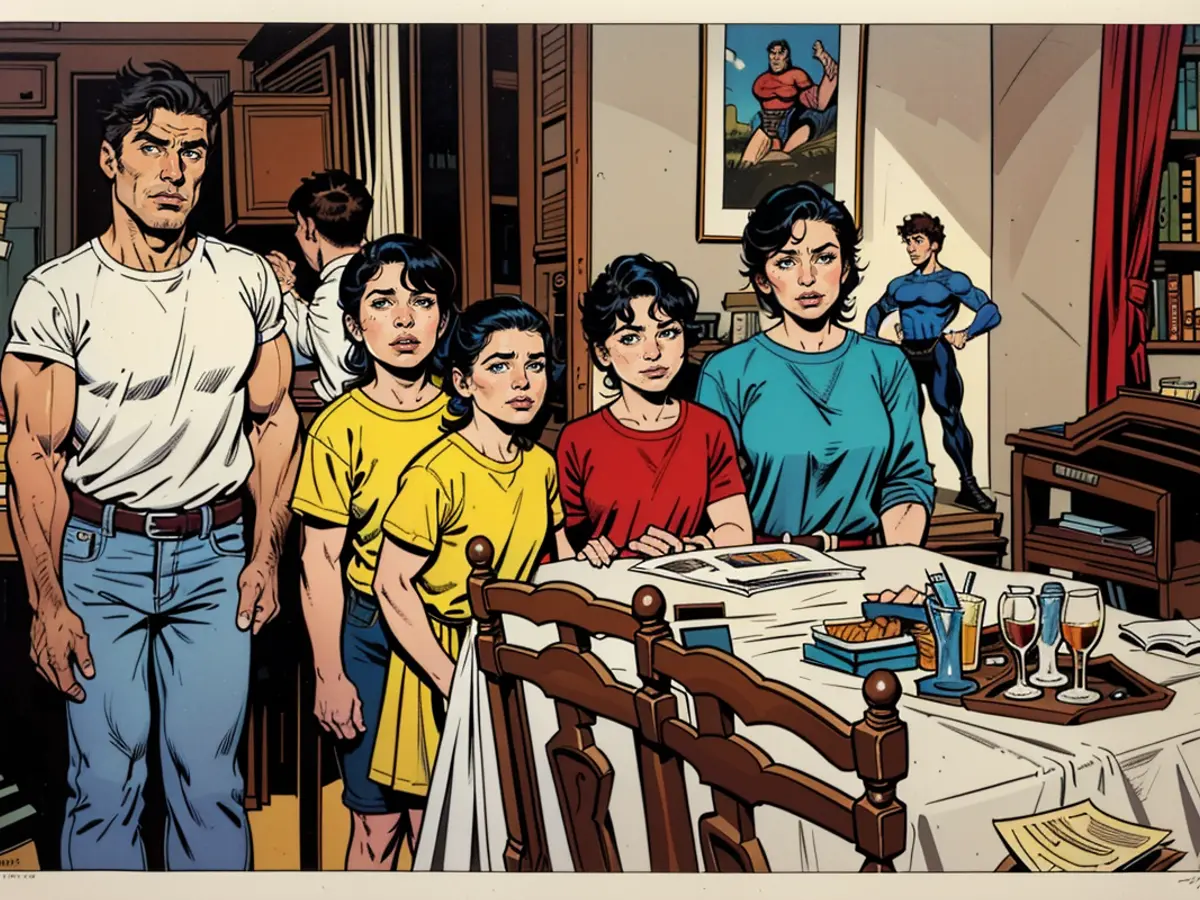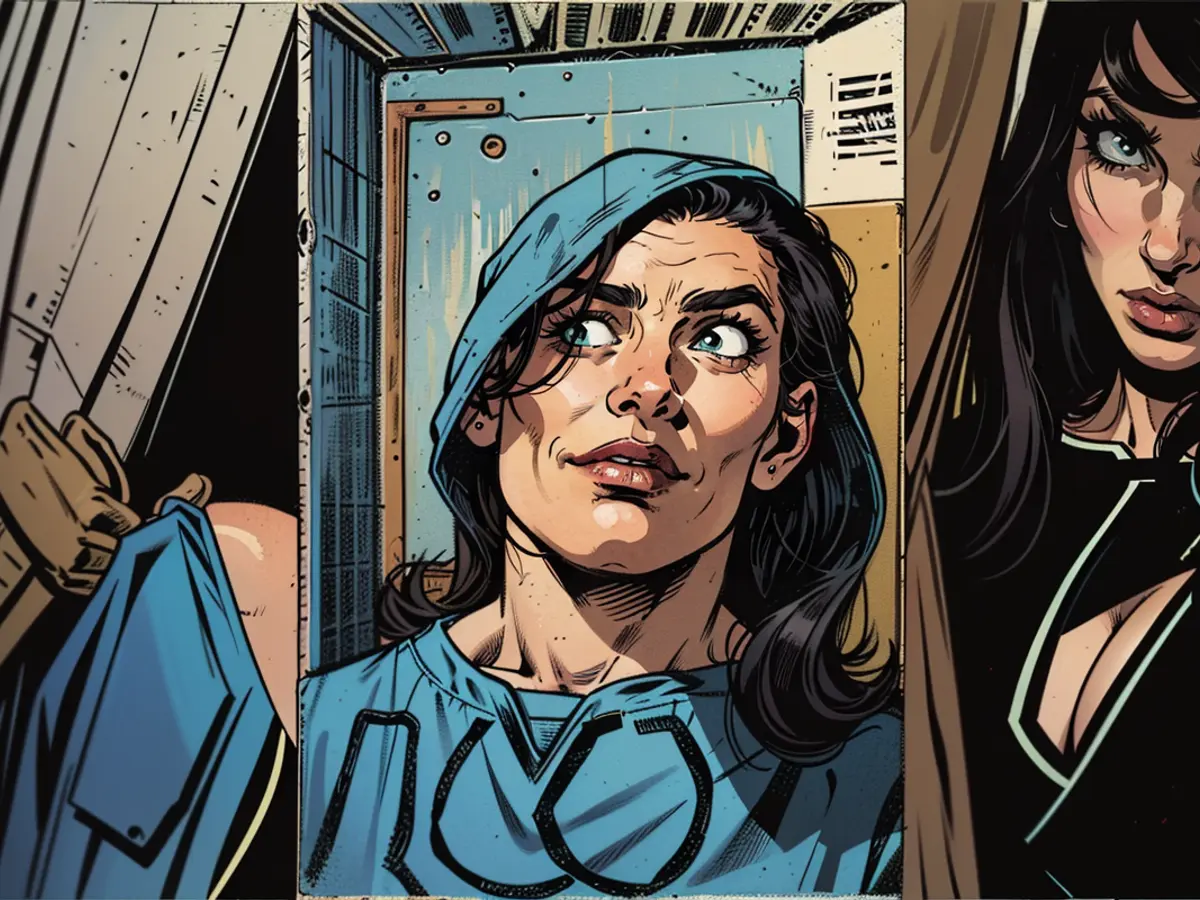A scrap merchant stumbled upon a painting in a cellar. Professionals affirm that it's an authentic Picasso piece.
Luigi Lo Rosso spent his days scouring deserted homes and trash dumps, seeking treasures to peddle in his family's pawn shop in Pompeii, Italy.
In 1962, he stumbled upon a rolled-up canvas depicting an irregular female figure in the cellar of a villa on Capri's coastline.
This painting is now thought to be a distorted rendition of French photographer and poet Dora Maar, Picasso's mistress, as per Luca Gentile Canal Marcante, an art connoisseur and the honorary president of the Arcadia Foundation, a Swiss-based restoration organization for art.
The painting showcases the asymmetrical style of Picasso, featuring a woman in a blue dress with red lipstick on canvas.
At just 24, Lo Rosso was unaware of the significance of the "Picasso" signature in the artwork's upper left corner, his son Andrea Lo Rosso shared with CNN.
The elder Lo Rosso placed it in a cheap frame and gifted it to his wife, much to her displeasure, as she felt it was not worthy of selling.
It adorned the Lo Rosso household for about 50 years before being transferred to their family-owned restaurant.
"When mother hung it on the wall to decorate the house, renaming it 'the scribble' due to the peculiarity of the woman's face depicted, I wasn't even born yet," Andrea Lo Rosso stated.
"From father's stories, I know that two canvases were retrieved from the Capri dump site. However, only one bore Picasso's signature. Both were covered in dirt and lime, and my mother cleaned them with detergent, as if they were carpets."
During his elementary school years in the 1980s, Andrea Lo Rosso learned about Picasso's "Buste de femme Dora Maar" from an art history textbook, discovered that the renowned Spanish artist had resided in Capri in the 1950s, and assumed the painting might possess value.
Thus, the family embarked on a multi-decade quest to authenticate the artwork's signature.
Art historians they consulted maintained it was a replica, but offered to buy it from them.

Suspicious, they registered the painting with Italia's patrimony police, who initially believed it to be stolen but allowed the family to keep it due to lack of authentication at the time.
The artwork has been kept in a vault in Milan since 2019. Last month, Cinzia Altieri, an authenticator for a patrimony court in Milan, concluded that the Picasso signature was genuine.
Altieri spent months examining the painting, comparing it to other Picasso works, and performing forensic tests to confirm its authenticity and the timing of its signing.
"There is no doubt that this is his signature," Altieri declared in a statement to the Italian media. "There was no evidence to suggest its falsity."
Marcante, an art expert who collaborates with the Lo Rosso family, confirmed his belief in the painting's authenticity.
The Lo Rossos' painting is estimated to be worth roughly €6 million ($6.6 million), based on current market value, as assessed by Altieri and Marcante.
If recognized by the Picasso Foundation in Paris, its value could increase dramatically.
"I'm excited but let's hold off on the celebrations until we've cleared the final hurdle," Andrea Lo Rosso noted.
"I continue to work every day, hoping that even in Paris they will acknowledge the painting's authenticity."
CNN has contacted the Picasso Foundation for comment.
Lo Rosso and his siblings stated they will auction the painting in honor of their father, should the Picasso Foundation recognize it, potentially increasing its value exponentially.

The painting's asymmetrical style is a testament to Picasso's unique artistry in the 'arts' world.Learning about Picasso's "Buste de femme Dora Maar" in an art history textbook sparked Andrea Lo Rosso's curiosity about the potential value of the painting.








